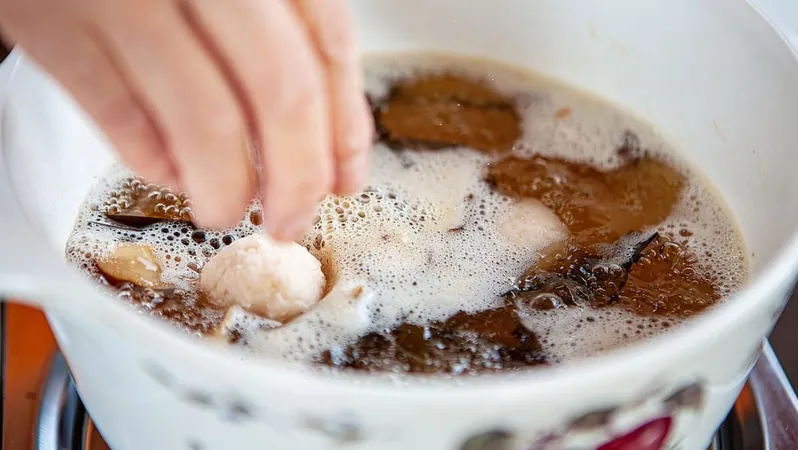
The Truth About MSG: Chefs' Dirty Little Secret or a Culinary Gem? Here’s What You Need to Know!
2024-11-03
Author: Wei Ling
What is MSG and Why is it Used?
MSG is derived from fermented sources, often tapioca broth, and is a sodium salt of glutamic acid—a naturally occurring amino acid found in many foods. In fact, you might be unknowingly consuming it in meats, cheeses, tomatoes, seaweed, and mushrooms. Dietitian Jaclyn Reutens explains that MSG activates taste receptors on our tongues, giving food that rich umami flavor that makes us crave more.
So why does MSG still carry a bit of a stigma? The term “Chinese Restaurant Syndrome” emerged in the late '60s, creating a wave of distrust toward MSG, fueled by poorly designed studies that cast it as a villain. But according to international food safety organizations, MSG has been deemed safe to consume, leading some chefs to embrace its magic.
MSG vs. Salt: The Showdown
You might be shocked to learn that MSG contains **only 12% sodium** compared to the **40% found in table salt**. For example, while a teaspoon of MSG packs about 615 mg of sodium, the same amount of salt delivers nearly 1,960 mg. This makes MSG a savvy way to reduce sodium intake while still enhancing flavors. Studies have indicated that consuming less than 0.5g of MSG typically does not trigger adverse reactions, especially when consumed as part of a meal.
However, it’s crucial to note that MSG isn’t meant to replace salt. It’s a flavor enhancer that works best in tandem with seasoning. Chef Eric Low emphasizes that mastering the balance of flavors is what differentiates a good chef from a great one.
Chefs Love It, But Don't Want You to Know
Despite MSG's benefits, many chefs are hesitant to admit they use it. Being associated with MSG can give the impression that a dish lacks authenticity or natural ingredients. Yet, savvy chefs from diverse culinary backgrounds—think David Chang and J. Kenji Lopez-Alt—wear their MSG affection as a badge of honor. As Chef Leonard Cheung reveals, Michelin-starred kitchens globally also utilize MSG for its flavor prowess, proving it’s not only an Asian staple.
Tips for Using MSG in Your Cooking
1. **Start Small**: If you’re new to MSG, use it sparingly — a common guideline is one-third of the amount of salt you’d normally use.
2. **Balance Flavors**: If you're adding MSG to dishes with salty condiments like soy sauce or fish sauce, reduce those slightly to avoid overwhelming flavors.
3. **Experiment with Umami**: For those looking to boost umami without MSG, consider incorporating dried seafood or mushrooms into your dishes. These provide concentrated flavor but may require more quantity to achieve the same effect.
4. **Check Online Ratios**: Look up MSG ratio guides to find the best balance for your favorite recipes.
5. **Innovative Uses**: From popcorn to watermelon, people are getting creative with MSG. Why not test it as a seasoning for scrambled eggs or stir-fried rice?
Final Thoughts
While MSG has had a rocky road to acceptance, it's about time we give it a chance in our kitchens. Understanding how to use it properly—balancing it with salt and other flavors—can elevate your culinary creations. Next time you're seasoning your dishes, consider adding this flavor enhancer to your repertoire. Who knows? You might just uncover a new world of taste!




 Brasil (PT)
Brasil (PT)
 Canada (EN)
Canada (EN)
 Chile (ES)
Chile (ES)
 España (ES)
España (ES)
 France (FR)
France (FR)
 Hong Kong (EN)
Hong Kong (EN)
 Italia (IT)
Italia (IT)
 日本 (JA)
日本 (JA)
 Magyarország (HU)
Magyarország (HU)
 Norge (NO)
Norge (NO)
 Polska (PL)
Polska (PL)
 Schweiz (DE)
Schweiz (DE)
 Singapore (EN)
Singapore (EN)
 Sverige (SV)
Sverige (SV)
 Suomi (FI)
Suomi (FI)
 Türkiye (TR)
Türkiye (TR)